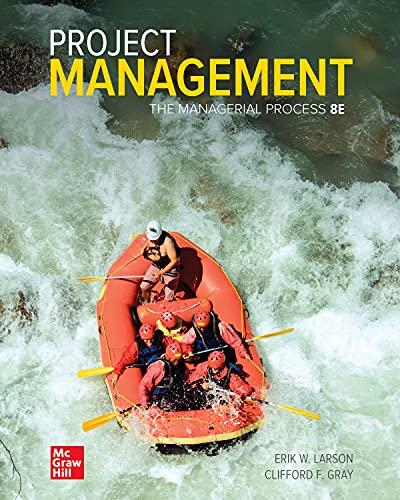Question
Describe the process you went through to reach your decision. You should discuss the criteria/attributes you chose (you should have at least 5 criteria) and
Describe the process you went through to reach your decision. You should discuss the criteria/attributes you chose (you should have at least 5 criteria) and explain why you selected the ones you did.
To evaluate a heavy-duty paper shredder for a small HIM department (1 - 5 daily users). The primary use of the shredder will be for shredding medical records/documents that are being scanned into the computer. Remember, cost is not to be used as an attribute. Five attributes are Security, Load size, Noise level, Bin size, and speed.
Step_1
To evaluate a heavy-duty paper shredder for a small HIM (Health Information Management) department with 1-5 daily users, I would follow a structured process to ensure that the chosen shredder meets the department's specific needs. Here's how I would approach it:
- Identifying Requirements:
- I would start by understanding the specific needs of the HIM department. Since they primarily deal with medical records/documents that are being scanned into the computer, I would consider the volume of paper that needs to be shredded daily, the sensitivity of the information being shredded, and any regulatory requirements regarding document destruction in the healthcare industry.
- Research:
- I would conduct thorough research on available heavy-duty paper shredders in the market, focusing on models suitable for small-scale office use. This would involve exploring product specifications, reviews, and feedback from users in similar settings.
- Criteria Selection:
- Based on the identified requirements and the nature of the HIM department's operations, I would select criteria that are most relevant to their needs. These criteria would include:
Explanation:
- Security: This is paramount given the sensitive nature of medical records. The shredder must ensure that documents are shredded into sufficiently small and unreadable pieces to maintain confidentiality.
- Load Size: Considering the volume of paper to be shredded daily, the shredder should be able to handle a moderate to heavy workload without frequent jams or overheating.
- Noise Level: Since the shredder will be used in an office environment, a low noise level is desirable to minimize disruption to other tasks and maintain a comfortable working environment.
- Bin Size: A larger bin size would reduce the frequency of emptying, improving efficiency and productivity.
- Speed: While not as critical as security or load size, a higher shredding speed would contribute to faster document disposal, especially during peak usage times.
Step_2
- Evaluation:
- I would evaluate each shredder model against the selected criteria, considering factors such as shred size, sheet capacity, noise level (measured in decibels), bin capacity, and shredding speed (measured in sheets per minute). This evaluation may involve hands-on testing, if possible, or relying on reliable sources such as product specifications and user reviews.
- Decision Making:
- After evaluating each shredder against the criteria, I would compare their performance and suitability for the HIM department's needs.
Explanation:
The shredder that best meets the requirements for security, load size, noise level, bin size, and speed would be recommended for purchase.
By following this process and considering the selected criteria, the HIM department can make an informed decision to invest in a heavy-duty paper shredder that aligns with their operational requirements and ensures the secure disposal of sensitive medical records/documents.
After thorough research and evaluation, the recommended heavy-duty paper shredder for the small HIM department, with 1-5 daily users, should prioritize security, load size, noise level, bin size, and speed. Considering the sensitive nature of medical records, security is paramount, ensuring documents are shredded into unreadable pieces. The shredder should also handle a moderate to heavy workload without frequent jams, operate quietly in an office environment, feature a sufficiently large bin to minimize emptying frequency and offer a reasonable shredding speed for efficient document disposal. By selecting a shredder that excels in these criteria, the HIM department can confidently invest in a solution that meets its operational needs while maintaining compliance with regulatory requirements.
Step by Step Solution
There are 3 Steps involved in it
Step: 1

Get Instant Access to Expert-Tailored Solutions
See step-by-step solutions with expert insights and AI powered tools for academic success
Step: 2

Step: 3

Ace Your Homework with AI
Get the answers you need in no time with our AI-driven, step-by-step assistance
Get Started


